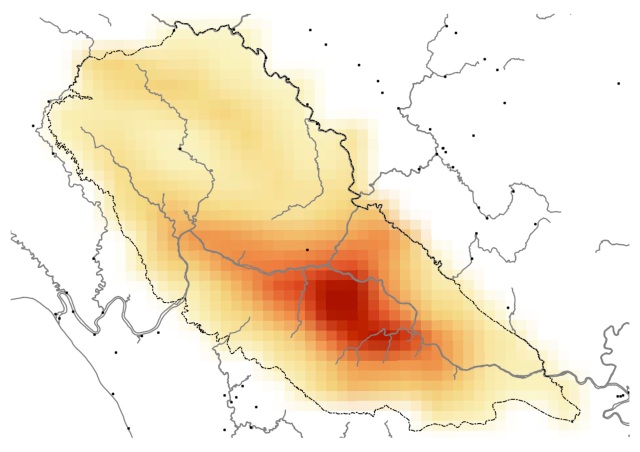Crested gibbons are endangered primates living in Indochina. This means they are pretty hard to find. Not only that, they live in remote areas of forest often miles from anywhere. This makes it particularly difficult and relatively expensive to try to estimate things like their distribution and abundance, which are useful things to know if you are trying to look at the impacts of management on a species, or monitor its recovery. Partly to overcome some of these problems, we trialled a novel survey approach and modeling process to estimate population status and distribution of gibbons and a number of other species in the Nam Kading National Protected Area (NKNPA) in central Laos. This approach estimated the probability of a gibbon group occupying a specific area (occupancy) and inferred abundance from this. Our hope was that by using one survey technique to estimate multiple species abundance this would save on costs.
Our efforts were not in vain, we provided the first estimate of the abundance of gibbons in the NKNPA and confirmed that the species is still present, albeit in low numbers. Our research also supports the premise that hunting is the main threat for gibbons within the NKNPA with proxies of access associated with lower abundances, especially roads.
Our “Hotspots” (see below) will aid in focussing anti-poaching patrols and future research into the species.

Gibbon Hotspots in the NKNPA
Although we only obtained sufficient data for abundance estimates for gibbons, we also collected data on eight other species. We believe that with some adaptations to the methods, and a longer inter-survey period this approach may prove a cost effective way to concurrently monitor a number of species for a reasonable cost.
With reduced threats and ongoing management we believe our methods may help to confirm recovery of gibbon populations. With all this we hope these small apes will be “gibbon” a second chance…
We discuss this and more in the full paper which can be accessed here or you can also contact me for a reprint.

